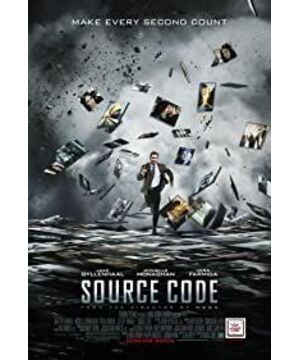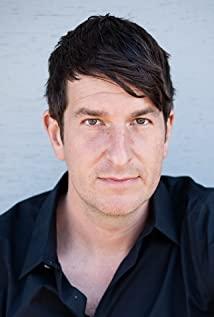The first trick to save money: replace those sci-fi visions with a sci-fi concept.
In 2011, a sci-fi film with an investment of only 32 million US dollars conquered countless audiences who demanded sci-fi with unpretentious pictures. This is "Source Code" . What made 32 million "hard science fiction" at the box office of over 100 million? Before the answer, let’s take a look at a set of figures: the special effects production cost of "Avatar" in 2010 cost 350 million US dollars; in 2011, "Transformers 3" Michael Bay paid 195 million US dollars to Industrial Light & Magic, which is responsible for special effects production. ; Even a Chinese children's fantasy film "Looking for Dragons and Treasures" was thrown to the special effects team of "Harry Potter" 100 million yuan for the only "Dragon" in the film that needed special effects. Such a huge number can not be consumed by "Source Code" with only 32 million investment, but it does not prevent "Source Code" from becoming a good science fiction.
The producer of "Source Code", Mark Gordon, who has supervised films such as "2012" and "The Day After Tomorrow", revealed that when shooting "Source Code", they used to pay for a $60,000 prop. I scratched my head, and $60,000 is just the basic shooting cost for one day of "2012". "When something like this happened, I realized the difference between this film and the previous film I produced, that is, we have to use 60,000 US dollars to do 6 million work." It turns out that they did the same. of. "Source Code" tells a sci-fi story about a parallel world. In order to find the murderer, the protagonist constantly travels to the train 8 minutes before the explosion disaster. Every time he goes back, he creates a different parallel world due to different behaviors. But this parallel world is exactly the same as the real world. In other words, the director does not need to spend a lot of money to create special effects, because the normal world is already contained in science fiction.
Although it is a science fiction film that started with a disaster, the special effects used in the disaster scene are only the scene of a train explosion. Compared with Michael Bay’s bombardment and waste when filming Transformers, Duncan Jones only did one blasting shot in The Source Code. The film’s multimedia visual effects supervisor Eric Norby produced CG animations for the train before the shooting of the blasting scene, and then he and the staff shot many red houses as the background of the train explosion. Eric said: "The shooting of blasting must require a very precise location. According to the plot, blasting starts with a passing car and continues to blast in sequence until every car is blown up. When we are shooting blasting, we must Make sure that the explosion can come in this order." After the blasting shooting is completed, the staff will synthesize the previously made CG train and red house pictures on the computer, and add fragments, dust, fire and other materials to embellish the shots of the explosion. That's it. "Many people think that we must have shot a lot of explosion scenes, but they don't know that we only repeated this shot 7 times." Eric Nobby said.
The second way to save money: find a leading star
with "good quality and low price". Apart from special effects production accidents, another huge expense in filming is to hire actors. In the flashy film industry, even with rare talent and a rock star dad named David Bowie, to give the audience the most primitive appeal, an actor with huge box office appeal is still needed. How much budget a superstar will spend, let’s look at a set of figures.
In 2010, Christopher Nolan’s "Inception" became a global hit. Now many viewers who read "Source Code" feel that "Source Code" is like a miniature "Inception", as everyone knows, " The full production cost of "Source Code" is not enough to pay for the salaries of several leading actors. You must know that in "Inception", Leonardo DiCaprio alone is paid as much as 15 million US dollars, let alone participating. Other stars who acted. Nowadays, the prices of popular Hollywood male stars are rising, and Johnny Depp and Brad Pitt are paid 20 million US dollars per movie. And big names like Tom Hanks at the celebrity level as early as 2007 called for the film's salary to 50 million US dollars. Faced with the staggering asking prices of the superstars, the producers had to rack their brains to find a "good quality and cheap" leading star for "Source Code".
In the end, they focused on the "Prince of Persia" Jack Gyllenhaal. After "Prince of Persia" and "Love and Elixir" starring Anne Hathaway, Gyllenhaal's popularity rose sharply. But the pay is only about 10 million US dollars, and rising stars like Gyllenhaal are the leading actors most needed in small-cost movies. Coincidentally, Gyllenhaal had seen Duncan Jones’ $5 million Virgo "Moon" a long time ago, and he admired his talent very much, and was immediately delighted after reading the script of "Source Code". If you want to starring madly, the actor will take the initiative to pay for it.
The third trick to save money: repetition and repetition of small indoor scenes.
The story of "Source Code" is based on the real event of a train explosion in 2004. The director conceived a way to use the brain nerves that have not yet died to repeatedly travel to the past. Technology. The protagonist who was almost killed in the Iraq war uses his remaining brain to repeatedly traverse back to the train that will explode in 8 minutes. Each time he traverses, he will make different choices, and each choice will change history. , To create a new parallel world.
Although director Duncan Jones has only made two full-length films so far, controlling the filming in the indoor landscape and reusing similar shots has almost become his style and symbol. In "Source Code", the male protagonist wakes up constantly in a small space similar to a space capsule imagined by his brain. In such a small confined space, Gyllenhaal has completed most of his one-man shows, and is in the process of filming. The only change in this space is that it becomes more and more chaotic as his state gets worse and worse. Another important scene takes place on a train that is about to explode. In order to avoid the cost of framing in various places, some scenes shot on the train in the film are shot by building a model train and shooting in front of the green screen. Finally It is completed by synthesizing the scenery outside the train.
In addition to controlling all the progress of the film's plot in the small indoor scenes, another money-saving technique directed by Duncan Jones is to reuse the footage. In "Source Code", the actor played by Gyllenhaal constantly wakes up in an environment similar to a space capsule he imagined. Every time he wakes up, the same shot is taken, and every time he travels back to the train that is about to explode. At times, it always starts from the same lens. With the same characters sitting in the same position, he will first go through everyone's previous behavior in his mind and select the perpetrators he suspects.
Although repeating the same shots continuously, the director used the plot to make this repetition a reasonable one, and while repeating, the entire film still maintains a clean editing and an unobtrusive narrative technique. This approach allows The commercialization of the film guarantees experimental narrative challenges and greatly saves the director's expenses.
The fourth trick to save money: the finishing touch of
special makeup. The use of special makeup is also a major money-burning event in Hollywood sci-fi movies, especially after the popularity of "The Lord of the Rings" and "Harry Potter", the special makeup technology and The effective combination of CG special effects technology creates an extremely imaginative fantasy effect. It also gave birth to the rise of fantasy and magic movies. The popularity of "zombie" movies such as "Resident Evil" and the American drama "The Walking Dead" has also made zombie makeup a skill that many "zombie fans" worship. However, although the cost of special makeup is much lower than the cost of computer special effects, if it is used on a large scale like the above-mentioned film, it is also a big burden. The financially-strapped "Source Code" crew obviously cannot do this. .
However, for the needs of the plot, the film still made a half-length model of Gyllenhaal under the ingenuity of the director. At the end of the film, the male protagonist played by Gyllenhaal lies in a huge instrument. Lenhar had already been blown up in half during a battle on an Iraqi military mission. His internal organs were all exposed, but his brain was still beating, and this beating brain was the core of the "source code experiment." , This is how it conceived the entire source code world.
Some fans said that this glimpse at the end of the film is simply the most "big scene" shot in the whole film. It can be seen that despite the short time, the effect of special makeup has become the finishing touch of the film, pushing the plot from to The climax of the climax is worthy of "good steel is used on the blade."
The development of science and technology has promoted Hollywood's science fiction movies to continue to climb to the peak. Nowadays, the box office of science fiction films has become the dominant global movie box office revenue. However, the Chinese film industry, which is also known as the rapid development, has always been blank in science fiction films. Once technical limitations were used as an excuse for us to miss the sci-fi giant, but today, "Source Code", which received a box office of 120 million US dollars for 32 million US dollars, tells us with facts: "Without money, no technology, you can still make science fiction blockbusters!" Facts Above, what Chinese science fiction films lack is not technology and capital, but a jumping brain!
[For more behind-the-scenes shooting and revealing the secrets with pictures and texts, see here, see here, see here: http://ent.163.com/special/sourcecode/ ]
View more about Source Code reviews











